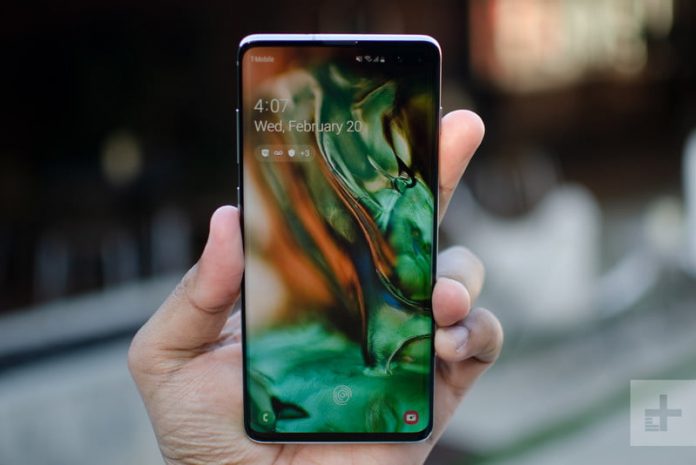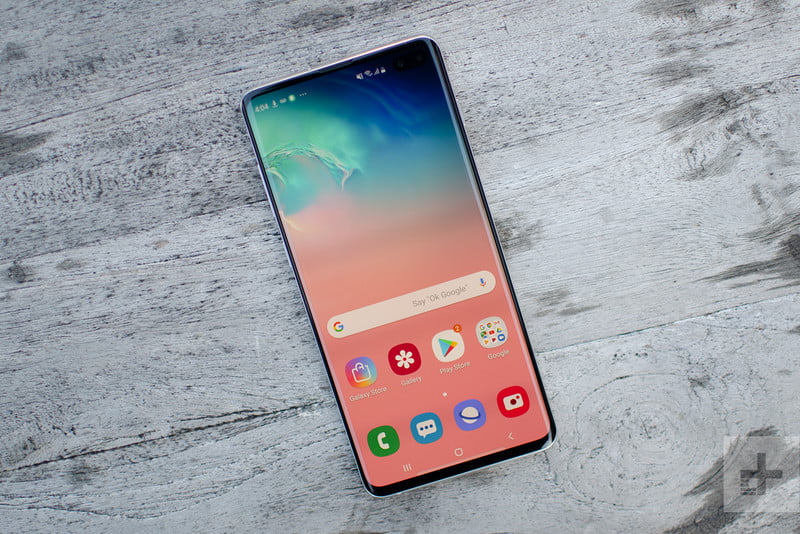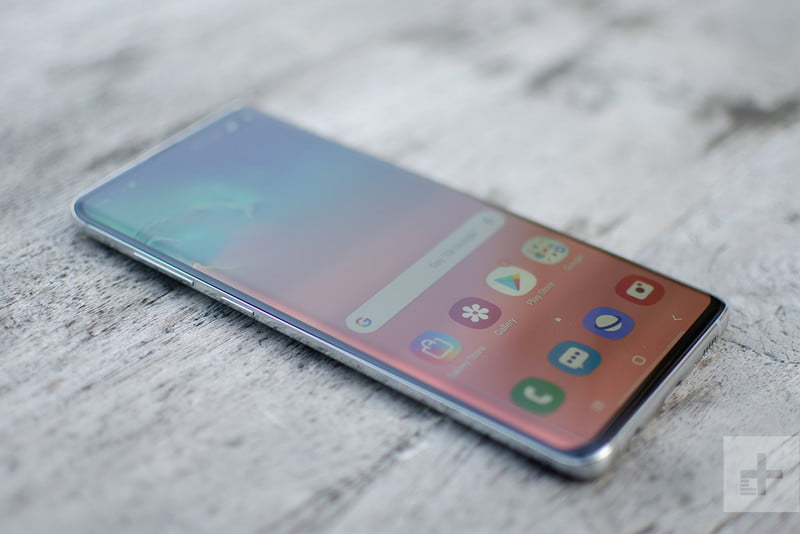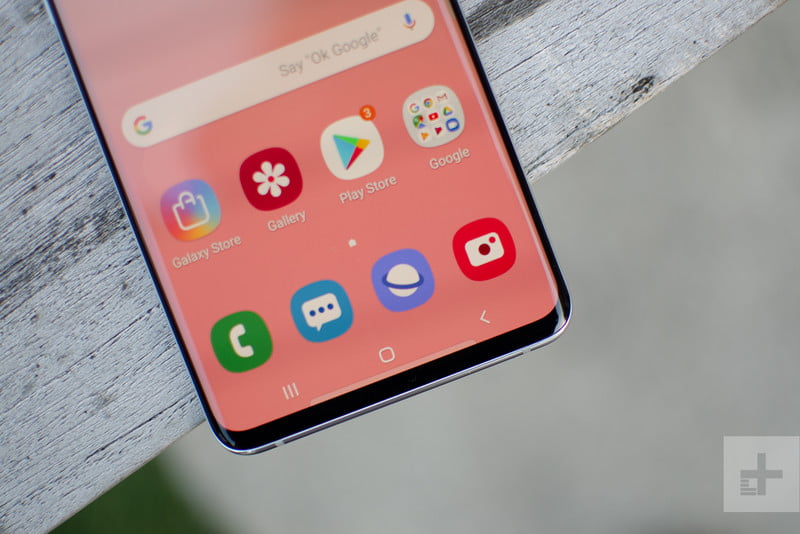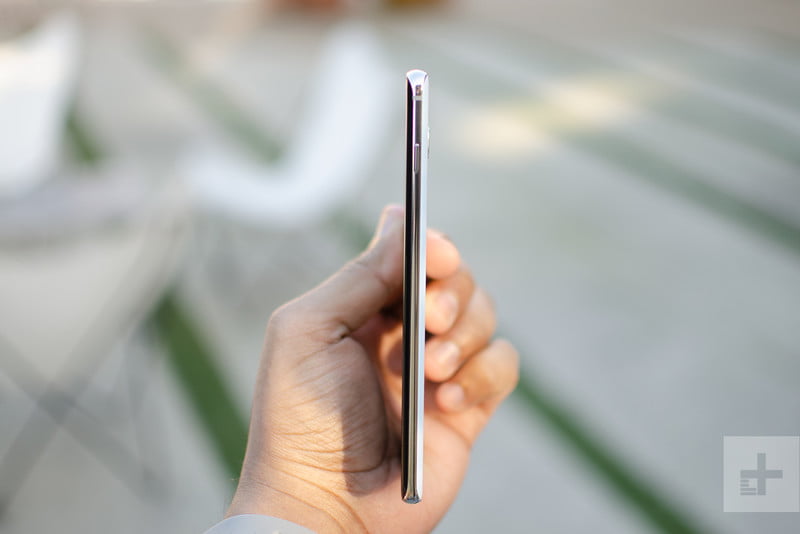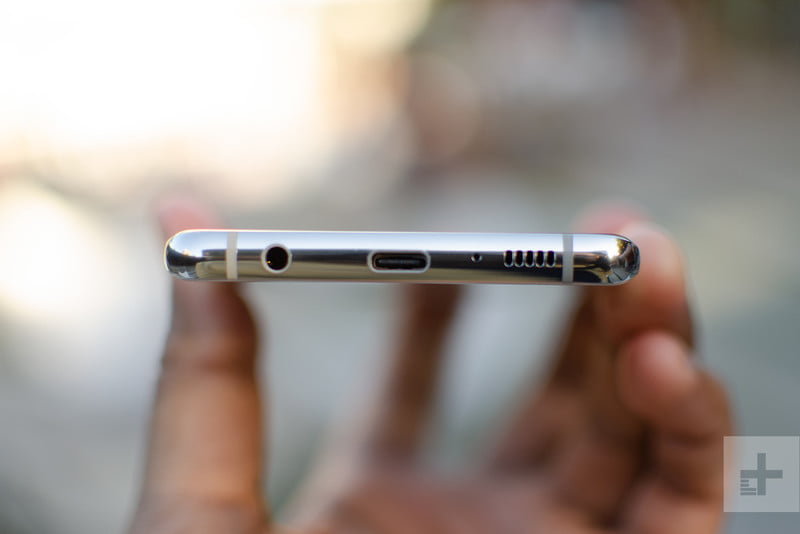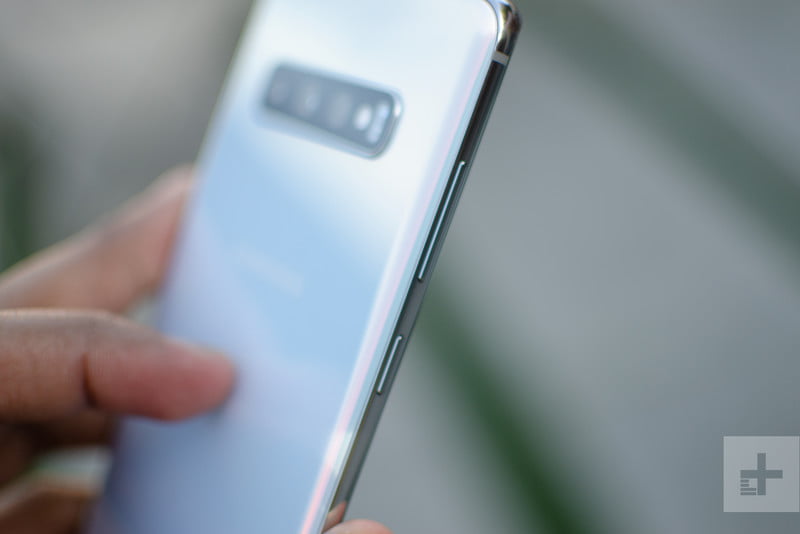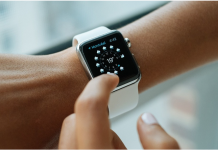Samsung has discharged an unfaltering beat of new Galaxy S telephones. The early Galaxy S telephones were great, however not incredible, and were such close duplicates of the iPhone that Apple sued Samsung over them and won.
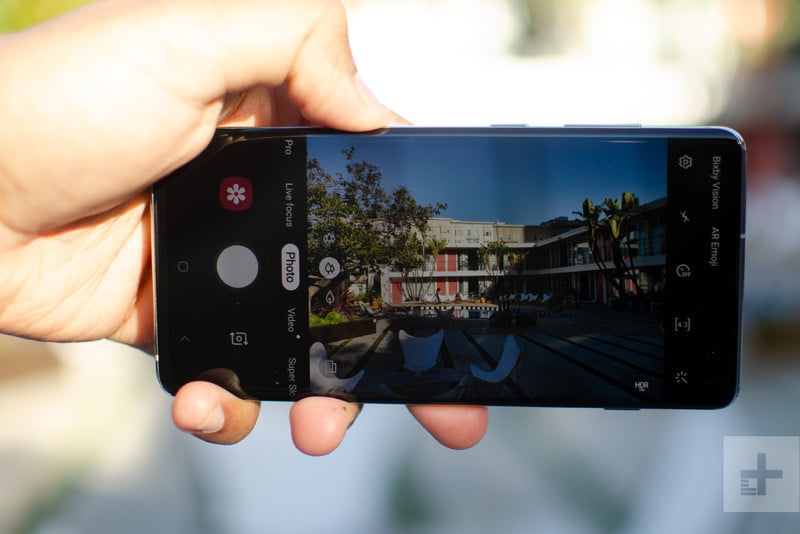
It took Samsung a couple of years to hit its walk with top of the line equipment, and the last couple of Galaxy S telephones have been extensively better, if somewhat unsurprising. The current year’s Galaxy S10 family is the same: these are top of the line telephones with front line innovation and smooth structures.
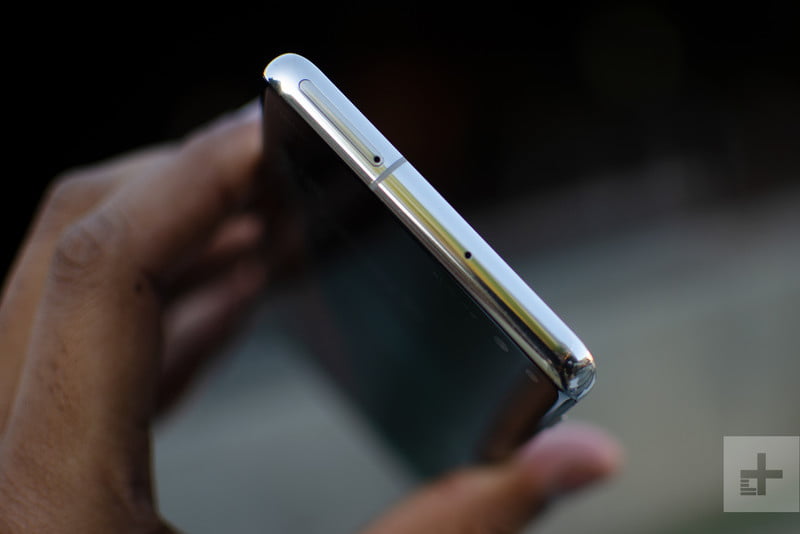
What Samsung has increased in the course of recent years is a personality. The Galaxy S10 is unmistakably Samsung — it is anything but a duplicate of the iPhone or some other gadget you can purchase. Actually, it nearly feels like the inverse of the iPhone: on the off chance that you’ve been baffled with Apple’s ongoing gadgets for lacking earphone jacks, including indents, or expelling unique finger impression scanners, Samsung is here for you with an earphone jack, a unique finger impression scanner, and a notch less screen structure (that has some different tradeoffs). It feels somewhat like the S10 is the counter iPhone.
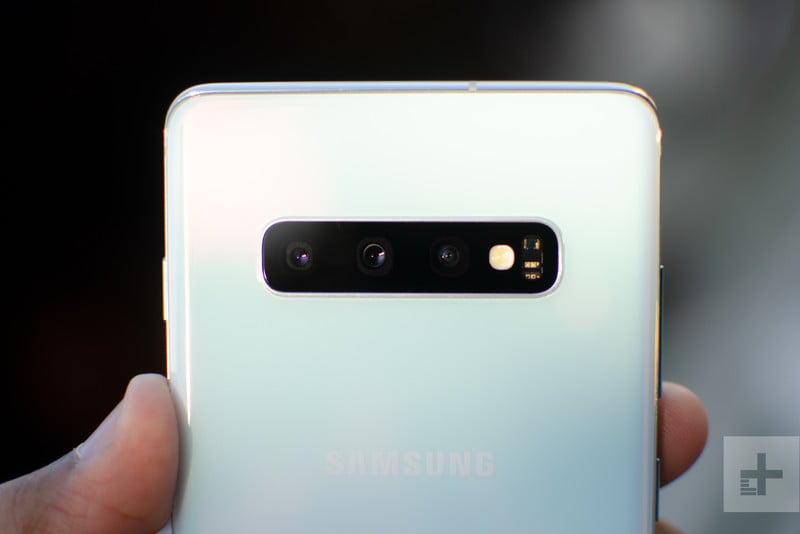
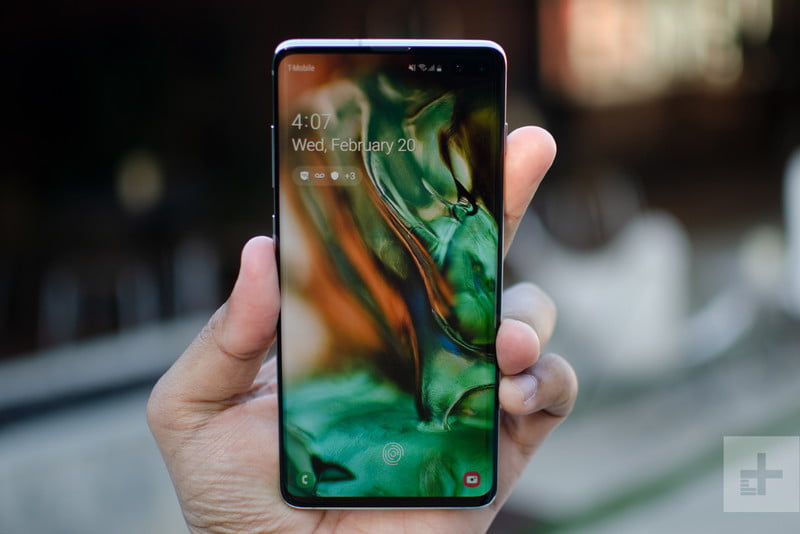
That isn’t to say there aren’t similitudes between Apple’s leader and Samsung’s. For a certain something, both are costly: the Galaxy S10 begins at $899.99, while the S10 Plus that I’ve been trying for as far back as week begins at $999.99. You can even choice a S10 Plus out to an amazing $1,600 — that is almost multiple times the beginning expense of the well-known OnePlus 6T.
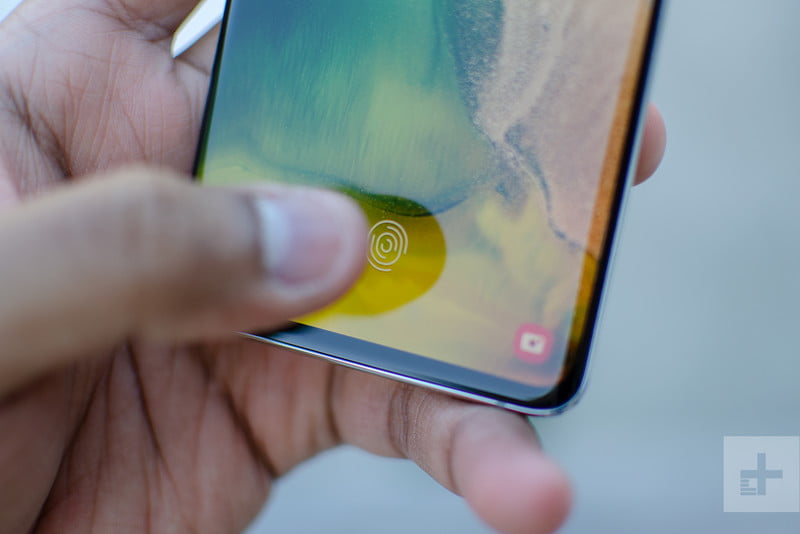
The other thing that the S10 imparts to the iPhone is an absence of a convincing differentiator from its past emphases. Without a doubt, the screen is greater and there are some steady progressions in execution and battery life, yet a S10 won’t change much for you in the event that you have a Galaxy S8 or S9.
All things considered, the S10 is a standout amongst the best telephones you can purchase at the present time, and the best Galaxy S telephone Samsung has ever constructed. It’s simply going to cost you.
Like a year ago’s Galaxy S9 and the Galaxy S8, the S10’s equipment is pleasant, which you’d anticipate from a gadget this costly. The most ideal approach to portray it is refined: a lot of telephones have bended screens, glass backs, and metal edges, however few feel this pleasant to hold or business-like. Samsung is presently on Apple’s dimension with regards to fit, completion, and believe, and well in front of Google, OnePlus, and other Android gadget producers.
On the best level S10 and S10 Plus, the front and back glass bend into the metal edge, which makes the telephones less demanding to hold, despite the fact that they have extensive screens. The bended screen has been a Samsung trademark for a couple of years, and keeping in mind that some probably won’t care for it, I don’t have any issues with it.
Bended screen or not, the S10 Plus is a major telephone, and not one I can easily utilize one-gave. If I somehow happened to get it, I’d most likely put a case and a PopSocket on it to make it less demanding to oversee. For the individuals who need a littler telephone, there’s the standard S10, which is still genuinely enormous, and after that the new, littler S10E, which we’ll cover in a different audit.
The S10 Plus’ refinements stretch out to things like its vibration engine, which is a lot more pleasant inclination than numerous other Android telephones. It’s not exactly on a par with Apple’s class-driving Taptic Engine, yet it’s not buzzy and bothering, either. It gives decent input to composing on the console.
In contrast to the iPhone, the Pixel, and numerous different telephones, the S10 still has an earphone jack at the base, by its USB-C charging port. There are additionally stereo speakers that are noisy and full sounding for when you’re not wearing earphones.
There are likewise the Galaxy S backbones: IP68 water opposition; quick wired and remote charging (with a quick charging block in the container); and microSD card support for extending the telephone’s stockpiling. The base model S10 accompanies 128GB of interior stockpiling, which I figure a great many people will be content with. Both the iPhone and Pixel give less capacity in their base setups and don’t enable you to extend it with a microSD card.
You can even utilize the S10 to remotely charge another gadget, similar to Samsung’s new Galaxy Buds earphones or Galaxy Watch Active smartwatch, however I haven’t generally discovered much use for this element past appearing off.
The fundamental disturbance with the S10’s equipment is equivalent to the last few Samsung telephones: there’s a devoted side catch for the Bixby menial helper. Samsung is at long last making it conceivable to program this catch to dispatch different applications and alternate ways — yet it’s obstructing the capacity to set the Google Assistant or other remote helpers to this catch, so despite everything you’ll host to turn to a third-get-together application on the off chance that you need to do that.
Beside the equipment structure, the fundamental head turner with any Samsung telephone is the presentation, and the S10 Plus’ does not baffle at all. It’s a 6.4-inch OLED board with rich, energetic hues and incredible review edges. It gets very brilliant for use in direct daylight, and has enough goals that singular pixels are difficult to see with the stripped eye. The screen extends right to the best and base of the telephone, with simply the slimmest of bezels above and beneath it.
Samsung appears to have conditioned down its forceful immersion, and the “Characteristic” mode, which is the thing that I’ve been utilizing, looks pleasant and drops the eye-burning neon hues Samsung was known for. Samsung claims the S10’s presentation is the first available to highlight HDR10+, which is bolstered by Amazon’s Prime Video and YouTube. (Apple’s lead iPhones bolster the contending Dolby Vision standard, which the S10 does not. None of these truly look like HDR on a TV.) Netflix doesn’t yet offer HDR on the S10 line, yet it will probably be refreshed to help it not long after the telephone is accessible to purchase.
I don’t assume it’s any stretch to state that the S10’s screen is one of, if not the absolute best, screens on any telephone accessible at this moment.
Maybe more fascinating than the screen itself is what’s implanted in it, despite the fact that the presentation stretches to the extremely top edge of the telephone, the S10 doesn’t have an indent pattern for its forward looking camera. Rather, Samsung is utilizing a balanced “gap punch” structure, which enables the camera to jab through the screen on the correct side. On the S10 Plus, this houses two cameras: the principle camera and an auxiliary one for profundity impacts and representation mode.
This plan lets Samsung dodge the oft-scrutinized indent look; however it likewise implies that the battery and system markers are adroitly pushed askew to one side. A score configuration has comparative tradeoffs, yet it’s in any event symmetrical: warnings and clock are on the left, battery and system markers are on the right. The helter-skelter look of the opening punch plan just looks more awful to me.
You can conceal the front cameras totally with a uniform dark bar over the best; however that just makes the S10 Plus appear as though it has a monster “temple” bezel. Contingent upon what application you’re utilizing, that dark bar may show up at any rate — it’s there when I perused articles in Pocket, paying little heed to my showcase settings.
The other new thing that is implanted in the screen is the unique mark scanner, which has been moved from the back of the telephone. The S10’s scanner is ultrasonic, which should be more dependable and harder to parody than the optical in-screen unique mark scanners we’ve seen on the OnePlus 6T and different telephones. It even works if your finger is wet.
Be that as it may, it’s not as quick or solid as the conventional, capacitive unique mark scanner on the back of the S9. The objective region for the pursuer is somewhat little (however the lock screen will demonstrate to you a chart of where to put your finger) and I must be extremely intentional with my finger position to get it to work.
That being said, I regularly needed to attempt more than once before the S10 would open. I’d simply rather have a Face ID framework that requires less work to utilize, or something like, an old-school unique finger impression scanner on the back of the telephone. The S10 has a face open element; however it’s simply utilizing the camera to search for your face and contrast it with a past picture — there’s no 3D mapping or anything. I was really ready to open the S10 with a video of my face played on another telephone.
Samsung says it built up the ultrasonic scanner since criticism from clients said they needed the unique mark pursuer on the facade of the telephone, and this plan considered more screen land than setting a capacitive sensor in a bezel beneath the screen. The S10 likewise does not have the iris examining login alternative of more seasoned Galaxy models, which would have required a larger number of sensors than the new opening punch screen configuration has space for. The organization revealed to me that it will persistently modify and enhance the face scanner’s execution paving the way to the S10’s accessibility.
Be that as it may, here’s my input to Samsung: go duplicate Apple’s Face ID framework. It’s far less demanding and more solid to use than the S10’s clever looking at the end of the day frustrating in-screen unique finger impression scanner.
The S10’s camera framework is like the S9 Plus’, yet rather than only two cameras, it has three. There’s the standard wide camera (12 megapixel, f/1.5 optically balanced out focal point), the now-recognizable fax camera (12 megapixel, f/2.4 optically settled focal point), and a fresh out of the box new ultra wide camera (16 megapixel, f/2.2 focal point) all mounted on the back of the telephone. This framework gives you a dimension of flexibility you can’t coordinate with an iPhone or Pixel — you can go from overly wide shots right to representation close ups with simply the press of a catch on the screen. It resembles having an entire camera pack brimming with focal points incorporated ideal with your telephone.
The ultra-wide camera is perfect for clearing scenes or cityscapes, and gives you a chance to catch essentially more in the edge. However, it’s wide to the point that it contorts vigorously at the edges — Samsung actually needs to accomplish more post-handling remedy after the picture is taken to decrease the mutilation. In any case, it tends to be amusing to shoot with and offers a point of view you can’t jump on numerous different telephones.
Beside the new focal point, camera execution hasn’t changed much from earlier Samsung telephones. The S10’s camera is still great, with quick centering, quick propelling, and by and large incredible execution in most lighting circumstances. However, regardless it has the well-known Samsung look: overexposed pictures and warm white parity. In the event that you didn’t care for the manner in which pictures looked from the S9, you presumably aren’t going to like the S10’s photographs.
Warm white equalization can be useful for representations, however Samsung’s inclination to overexpose pictures for more brilliant shots additionally makes skin tones look odd a ton of times. The S10 will likewise forcefully smooth skin to lessen clamor, particularly in low light shots.
The one territory that Samsung hits a decent harmony between the Pixel and the iPhone is with HDR: it’s not as ill-humored as Google’s photographs, however it doesn’t pull up the shadows in peculiar ways like the iPhone does. That is incompletely in light of the fact that it doesn’t have to, since it’s as of now overexposing more than the iPhone would, however the HDR looks more normal than Apple’s subsequently.
One strange eccentricity: the S10’s picture mode utilizes the principle camera rather than the fax, so representation shots turn out really wide. It resembles how the iPhone XR functions, rather than the XS.
Obviously, Samsung has added new programming traps to the camera: the AI-fueled scene recognition mode presently has 30 unique situations it will perceive, and it has an element that will enable you to form your shots better, which is cool since it can help maintain a strategic distance from slanted skylines in your photographs. It has a night mode, however not at all like the Pixel, you can’t simply turn it on at whatever point you need. You should be in an extremely dull zone — under 1 lux — and be utilizing the AI scene analyzer mode for it to trigger. Furthermore, regardless of whether you do all that, despite everything it doesn’t function just as Google’s Night Sight.
Over on the video side, however, the S10 is far greater than the Pixel and even gives the iPhone a keep running for its cash. You can shoot in up to 4K at 60 fps with the fundamental camera or 4K at 30 fps with the ultra-wide or fax. There’s another Super Steady adjustment include that makes truly smooth film, yet that will bolt you to 1080p and the principle camera when you turn it on. At long last, the stereo sound recorded by the S10 is actually very great, and superior to anything I’ve gotten notification from most other Android telephones.
For the front camera, the new 10-megapixel sensor with self-adjust delivers sharp pictures, and there’s a catch to get somewhat more extensive of a shot in case you’re shooting a gathering selfie. (Amusingly, this does not utilize the S10 Plus’ second front camera for a more extensive view; it’s simply trimming in and out from a similar picture.) Thankfully, the excellence modes are altogether killed of course, however the picture starts to go into disrepair in low light. The picture mode on the S10 Plus is likewise entirely average, however not immaculate, much like some other telephone’s representation mode. There are a few new impacts that you’ll most likely use once and afterward never contact again, much the same as Apple’s Portrait Lighting stuff.
For a long time, Samsung telephones had lovely, fit equipment that was let somewhere near lousy programming. I’m upbeat to state that is not the situation with the S10. Its product isn’t impeccable, and there is still opportunity to get better, yet by and large it looks decent, bodes well, and is for the most part simple to utilize.
Samsung is calling this product One UI, and it’s running Android 9.0 Pie as its base. The majority of the objective of One UI is to offer a durable look and feel makes it simpler to utilize these huge screened telephones. In that regard, Samsung has been effective: a great deal of the critical stuff you have to get to is down at the base by your thumb.
Samsung likewise incorporates a considerable lot of the Android 9 highlights Google appeared a year ago, for example, the Digital Wellbeing administration, versatile splendor highlights, and the screen turn catch in the route bar.
Yet, I’d in any case prefer to see more enhancements. Samsung’s interpretation of a signal interface is so befuddling I wound up utilizing the default three catch navbar. There are additionally still a cluster of copy Samsung and Google applications, similar to two email applications, two application stores, two programs, two menial helpers, etc. I wish Samsung would simply give me a chance to pick which ones to introduce on setup. Further, the S10 Plus I’ve been utilizing is an opened model, so you can anticipate that transporters should aggravate this even with their very own applications to finish everything.
The annoying inquiry with Samsung programming is to what extent it will take to get refreshes. Google’s going to discharge Android Q at some point in the not so distant future, and you’ll presumably need to hold up an additional a half year or so before it lands on the S10, if a year ago’s timetable was anything to pass by.
The S10 Plus is the principal telephone I’ve utilized with Qualcomm’s new Snapdragon 855 processor, and execution is shockingly quick and smooth. Applications open decisively, looking over is smooth, and the S10 never feels like it’s getting stalled or overpowered. It’s difficult to measure this, yet the UI feels more refined than an OnePlus 6T or other top of the line Android telephones.
So also, the S10 Plus’ battery life has been solid enough that I simply don’t need to consider it or stress that I’m going to come up short on charge. I’ve had the capacity to get two days between accuses of light use and experienced no difficulty making it an entire day with overwhelming use. In any case, it’s a major telephone with a major battery, so this is the sort of stamina I expect now.
Following 10 years of Galaxy telephones, it’s anything but difficult to reject the S10 as simply one more cell phone that doesn’t generally offer anything new or historic. That isn’t really wrong; I don’t believe there’s a lot of a purpose behind S9 or even S8 proprietors to run out and burn through $1,000 on a S10. Samsung itself is going to discharge a wild collapsing telephone in two months, and the S10 is simply one more chunk cell phone like we’ve had for quite a long time.
In any case, this is the 2019 lead Android telephone that a greater number of individuals will purchase than some other, and it gives as solid an option in contrast to the iPhone as you can discover. It truly boils down to individual inclination — would you say you are so hitched to iOS and iMessage that you’ll never leave, or would you say you are searching for something that has highlights you can’t jump on the iPhone? In case you’re the last mentioned, the S10 is here for you.
Similarly, in case you’re bantering between the S10 and a Pixel, the inquiry is the way imperative you think programming updates and night photography are. On the off chance that those things aren’t exceptionally high on your rundown, the S10 is superior to the Pixel in for all intents and purposes each other regard.
Lastly, in case you’re pondering regardless of whether the S10 Plus is worth almost twofold the expense of an OnePlus 6T, your additional cash will go toward a superior showcase, better speakers, waterproofing, remote charging, and a vastly improved camera. That may be sufficient stuff to make it justified, despite all the trouble, if you care pretty much the majority of that.
Obviously following a time of Galaxy telephones, Samsung comprehends what its clients need and what they anticipate. We’ve just observed looks at where the following 10 years will take us, however in case you’re searching for the best Android telephone accessible today, the S10 Plus is it.


